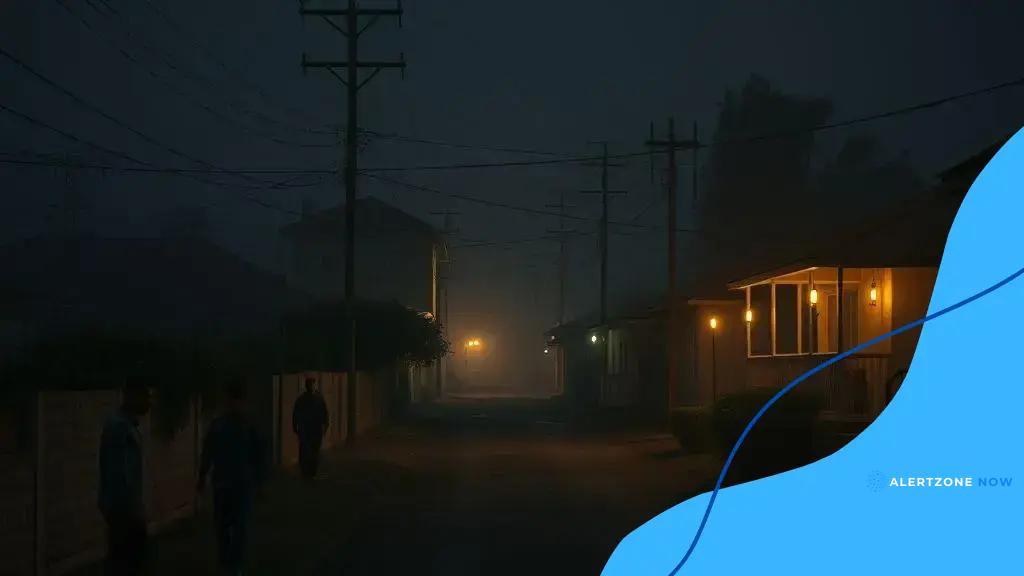Eskom crisis: understanding its impact and solutions

Anúncios
The Eskom crisis is a significant power supply challenge in South Africa, characterized by frequent blackouts and load shedding, impacting the economy and communities while prompting calls for renewable energy solutions and infrastructure modernization.
The Eskom crisis is a pressing issue for South Africa, affecting millions across the country. Have you wondered how this energy dilemma impacts daily life and the economy?
Anúncios
What is the Eskom crisis?
The Eskom crisis refers to the ongoing struggle of South Africa’s state-owned power utility, Eskom, to provide reliable electricity. This situation has emerged from a combination of financial, operational, and infrastructural challenges. Understanding this crisis is crucial, as it affects every household and business in the country.
Current Energy Situation
Currently, Eskom is grappling with significant issues like aging infrastructure and insufficient maintenance. The impact of these problems is seen in frequent blackouts, known as load shedding, which disrupt daily life and economic activities all over South Africa.
Reasons Behind the Crisis
Several factors contribute to the Eskom crisis. They include:
Anúncios
- Inadequate investment in generation capacity.
- Corruption and mismanagement over the years.
- Dependence on coal, which faces environmental concerns.
The reliance on old power plants has intensified the urgency to find sustainable solutions. Many stakeholders, including the government and private investors, are exploring various approaches to address these challenges.
Implications of the Crisis
As the Eskom crisis continues, its effects ripple through different sectors. Households suffer from unreliable power, while businesses face increased operational costs due to alternatives like generators. This uncertain energy supply poses a significant threat to economic stability and growth.
Looking Ahead
To combat the Eskom crisis, various strategies are in development, focusing on improving infrastructure, investing in renewable energy, and enhancing management practices. These efforts are essential for restoring public trust and ensuring long-term energy security in South Africa.
Historical context of energy issues
The historical context of energy issues in South Africa reveals a tangled web of challenges that have led to the current Eskom crisis. Understanding these factors helps us grasp why the current energy supply system is so strained.
Development of Eskom
Eskom was established in 1923 and played a crucial role in the country’s electrification. Initially, the utility was focused on expanding electricity access, which significantly supported industrial growth. However, rapid expansion led to infrastructure challenges that we see today.
Dependence on Coal
South Africa became heavily reliant on coal as its primary energy source. Although it provided cheap electricity, this dependence has caused environmental and sustainability issues. The reliance on coal also means that aging coal plants are now struggling to meet current demand.
Political Influence and Management Issues
Through the years, Eskom has been affected by political decisions and mismanagement. Corruption scandals and misallocation of resources have led to financial troubles. This has resulted in a lack of investment in necessary upgrades and maintenance. As a consequence, Eskom’s aging infrastructure has deteriorated further.
Transition to Renewable Energy
In recent years, there has been a push for a transition to renewable energy sources. The government aims to diversify the energy mix by including solar and wind resources. However, progress has been slow, and challenges remain in overcoming the legacy issues tied to coal dependency.
The energy crisis continues to evolve as the country grapples with how to provide reliable electricity in a changing landscape. Stakeholders are working together to seek feasible solutions that honor both environmental sustainability and the need for a stable energy supply.
Consequences for South African economy

The consequences of the Eskom crisis on the South African economy are profound and wide-reaching. As power outages and load shedding become more common, businesses and households are facing significant challenges.
Impact on Businesses
Many businesses rely heavily on a stable power supply. Frequent blackouts disrupt operations, causing delays and increased costs. Small and medium enterprises are particularly hard hit, as they often cannot afford backup generators.
Unemployment Rates
With decreased production capabilities, many companies are forced to downsize or even close. This leads to higher unemployment rates across the country, affecting families and communities. Job losses further strain the economy as consumer spending decreases.
Overall Economic Growth
The South African economy is already facing challenges, and the Eskom crisis exacerbates them. Key sectors, like mining and manufacturing, experience slowdowns, which stunt economic growth. GDP growth forecasts are often revised downward due to these ongoing power issues.
Increased Energy Costs
As Eskom raises tariffs to cover rising costs and maintenance needs, energy becomes increasingly expensive for consumers and businesses. This can lead to a ripple effect, raising prices on goods and services, which ultimately impacts the cost of living.
The government recognizes the urgency of addressing these challenges. However, solutions take time to implement, while the pressures on the economy continue to mount. Stakeholders are working to find ways to stabilize the energy supply, with hopes of restoring confidence in the economy.
Possible solutions and innovations
Finding possible solutions and innovations to the Eskom crisis is essential for South Africa’s future. As the nation faces ongoing energy challenges, it must explore diverse approaches to stabilize its electricity supply.
Investment in Infrastructure
One effective solution involves investing in infrastructure upgrades. Modernizing aging power plants will enhance efficiency and reliability. This includes integrating new technologies that can better manage energy distribution.
Renewable Energy Sources
Incorporating renewable energy sources is another key strategy. Wind, solar, and hydroelectric energy can significantly reduce reliance on coal. Many projects are already in the planning stages, aiming to harness South Africa’s abundant natural resources.
- Solar parks in various regions.
- Wind farms along the coastlines.
- Hydropower from existing dams.
Transitioning to cleaner energy not only benefits the environment but also creates jobs in new sectors.
Energy Efficiency Programs
Promoting energy efficiency can lead to significant savings. By implementing standards and programs that encourage energy-saving appliances, households and businesses can reduce their electricity consumption. Educating the public about sustainable practices is also crucial.
Decentralized Energy Solutions
Decentralizing energy production can empower communities. Many areas can benefit from microgrids, which allow local energy generation and distribution. This can improve resilience against power outages while also supporting local economies.
The collaboration between government, private sectors, and communities will be vital to implement these solutions effectively. Addressing the Eskom crisis requires innovative thinking and a commitment to change.
Community responses and resilience
Community responses and resilience are vital aspects of dealing with the Eskom crisis. As communities face power shortages and frequent outages, they often come together to find solutions and support one another.
Grassroots Initiatives
Many neighborhoods have started grassroots initiatives to cope with ongoing energy challenges. This includes organizing resources for shared generators or forming local co-ops that focus on alternative energy sources. Such community-driven efforts can provide immediate relief and long-term sustainability.
Support Networks
Strong support networks also emerge during crises. Neighbors help each other by sharing information about energy-saving tips and local resources. They coordinate efforts to ensure that vulnerable populations, such as the elderly or disabled, receive the assistance they need during outages.
- Setting up community kitchens using alternative energy.
- Creating local energy-saving workshops.
- Forming community monitoring groups to track outages.
This collaborative spirit helps improve the situation while fostering a sense of community.
Education and Awareness
Education plays a key role in building resilience. Many communities organize workshops to teach residents about energy conservation and the benefits of renewable energy. Increased awareness empowers individuals to make informed decisions and adopt more sustainable practices.
Advocacy and Engagement
Community members are also becoming advocates for change. Engaging with local governments and organizations, they seek accountability from Eskom and push for systemic improvements. These efforts can amplify their voices and bring attention to critical needs.
As communities unite in their responses to the Eskom crisis, they build resilience. By supporting each other and implementing innovative solutions, they create a more sustainable and empowered future.
Eskim crisis has significant implications for South Africa, affecting its economy, communities, and environment. However, there is hope in the form of innovative solutions and community resilience. By investing in renewable energy, modernizing infrastructure, and fostering grassroots collaboration, South Africa can overcome these challenges. Community support and advocacy will be crucial in driving change and ensuring a sustainable energy future. Together, through education and empowerment, South Africans can turn the crisis into an opportunity for renewal and growth.
FAQ – Frequently Asked Questions about the Eskom Crisis
What is the Eskom crisis?
The Eskom crisis refers to the ongoing power supply issues faced by South Africa’s state-owned electricity supplier, Eskom, which often results in load shedding and frequent blackouts.
How does the Eskom crisis affect businesses?
The crisis disrupts operations, leading to increased costs and potential job losses as businesses struggle with unreliable power sources.
What role do communities play in responding to the crisis?
Communities are coming together to support one another, sharing resources and organizing grassroots initiatives to cope with energy shortages.
What are some solutions being explored to address the Eskom crisis?
Solutions include investing in renewable energy sources, modernizing infrastructure, and promoting energy efficiency programs to reduce dependence on coal.





